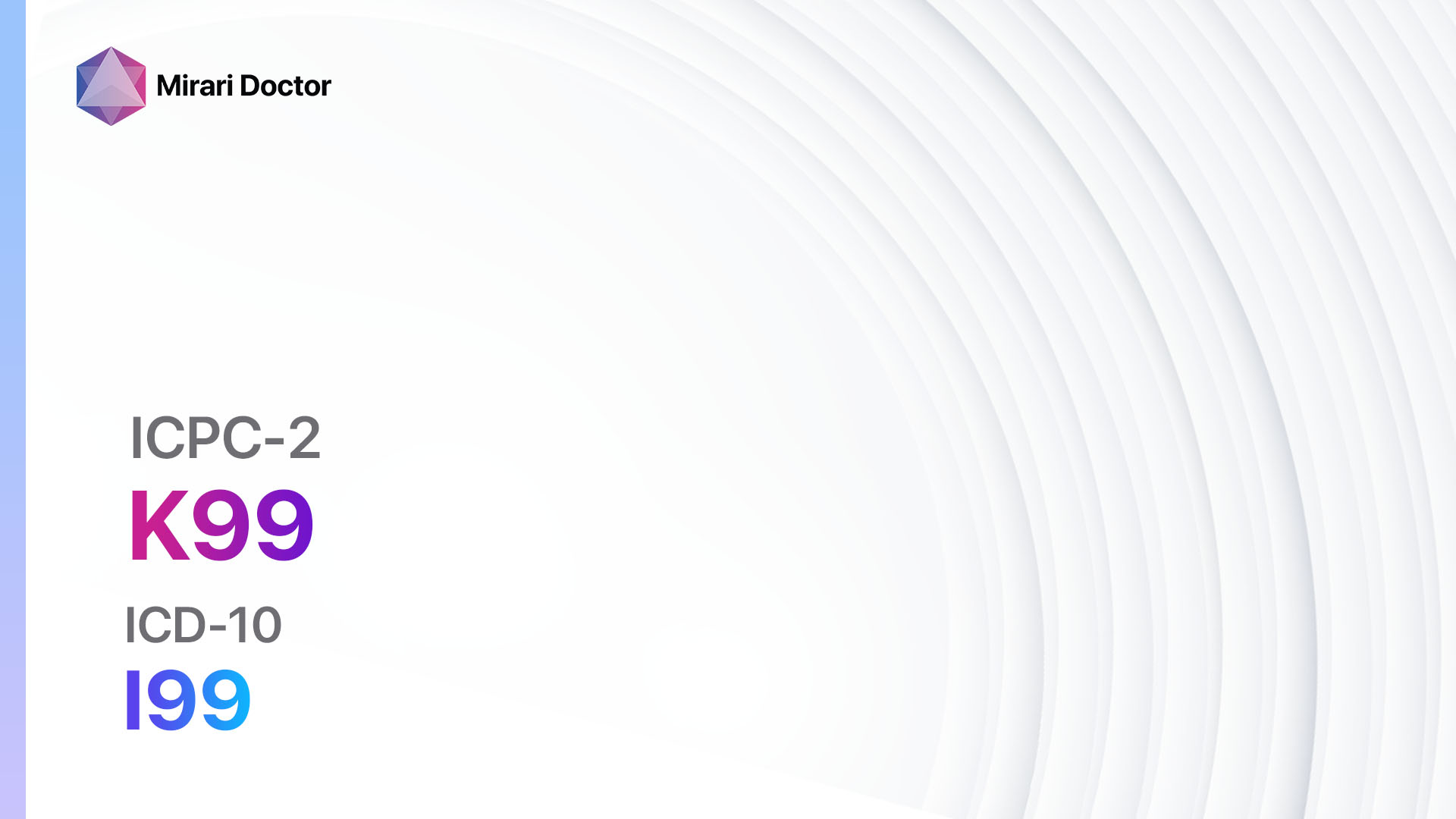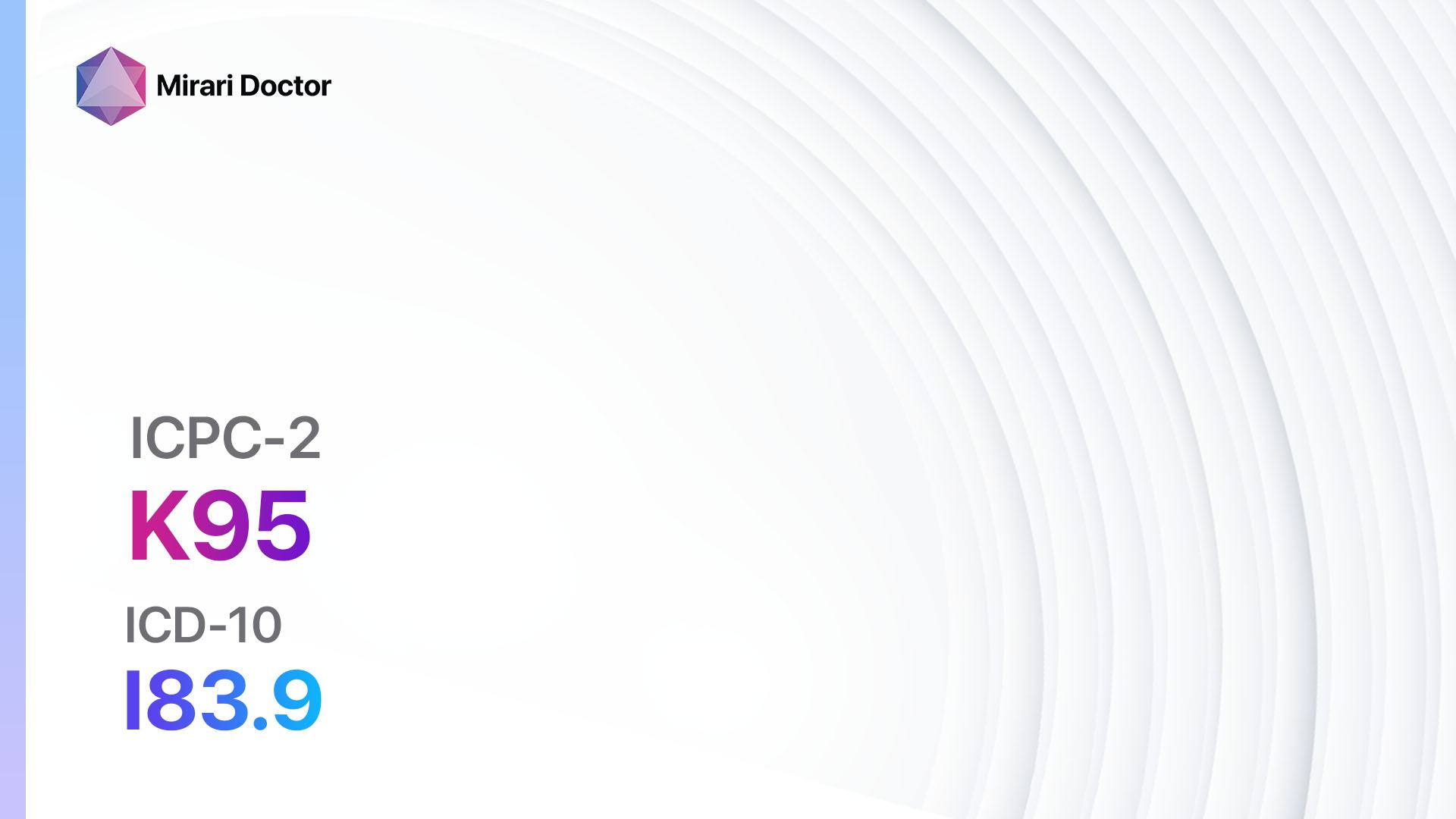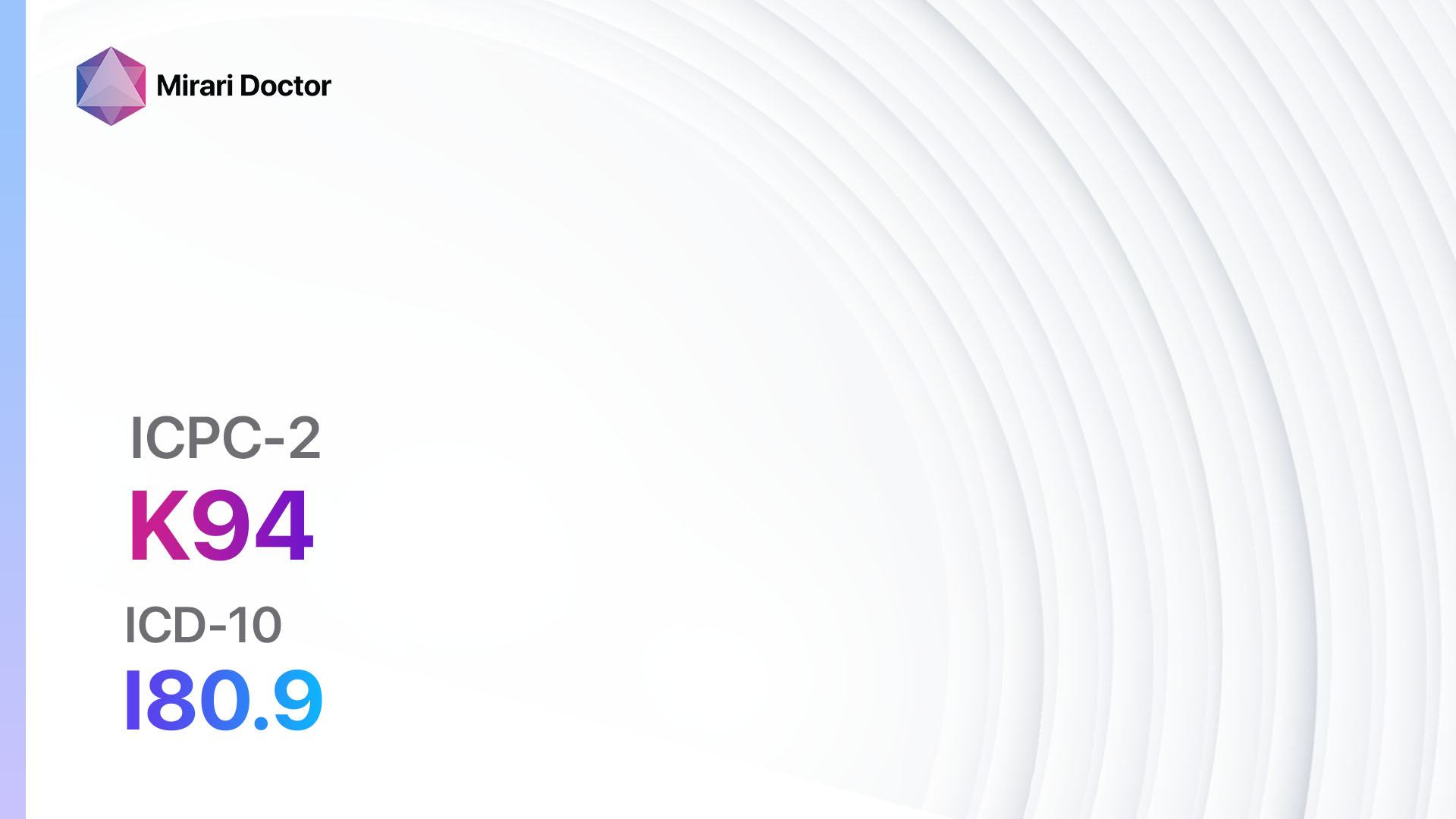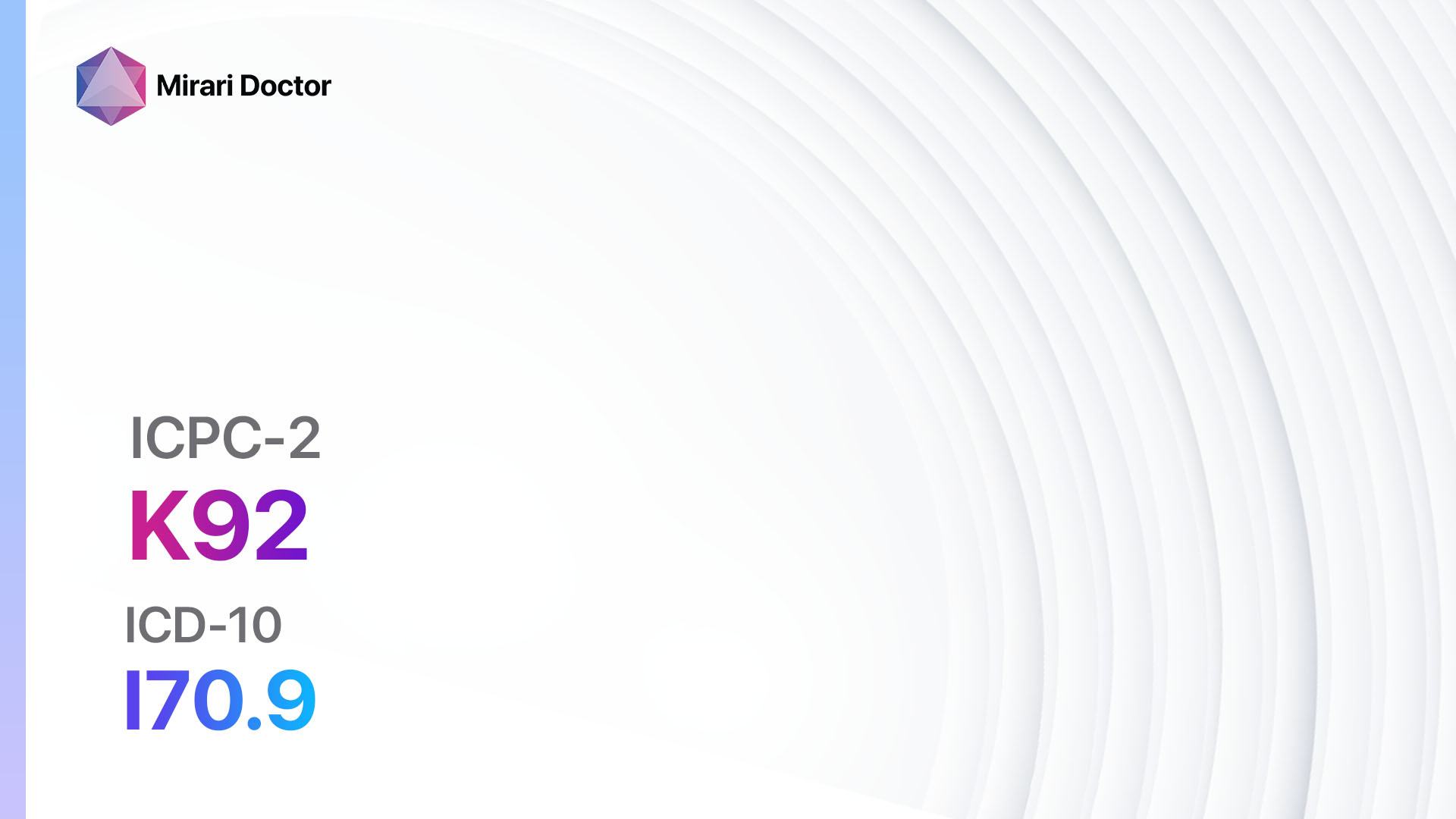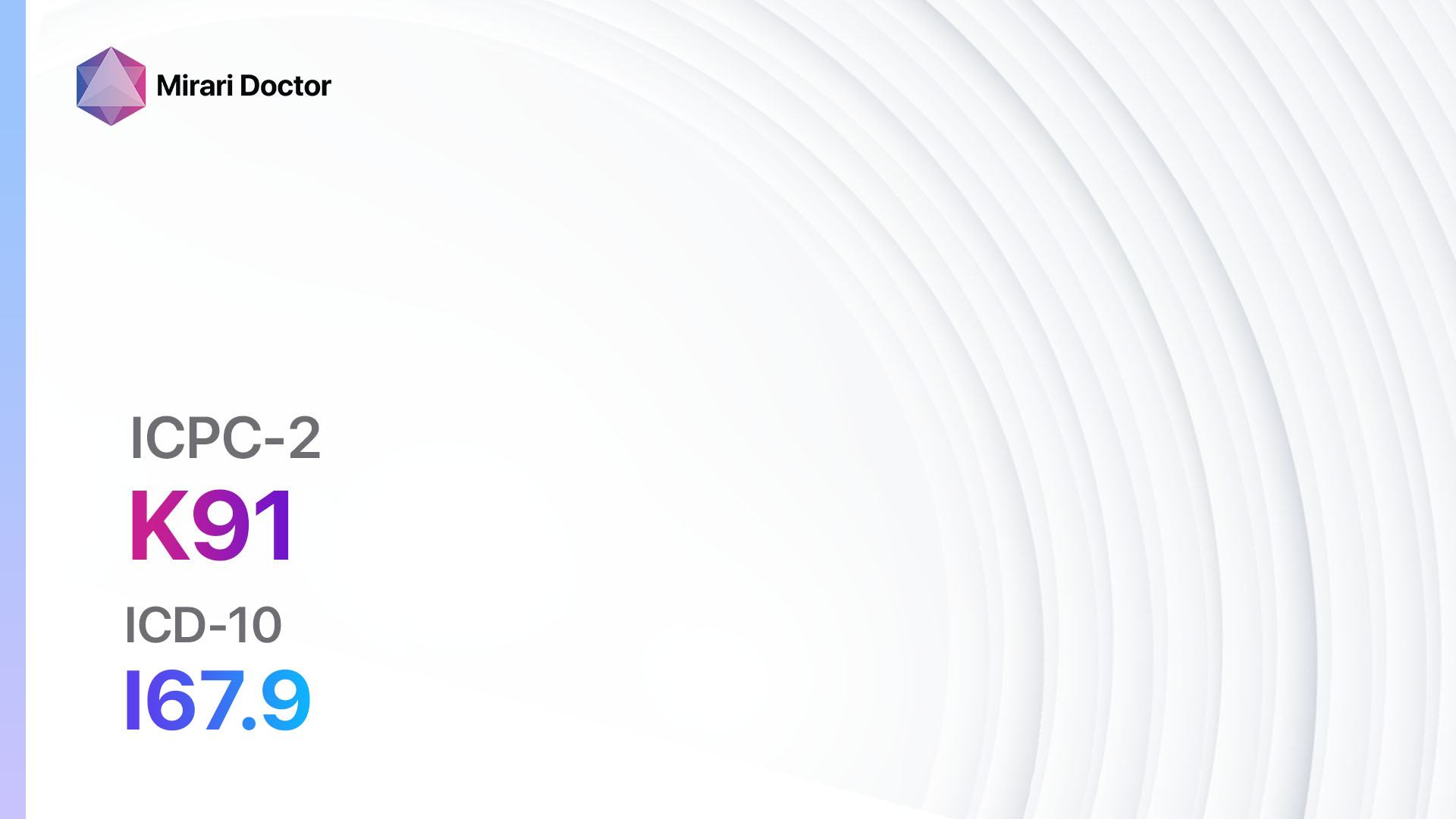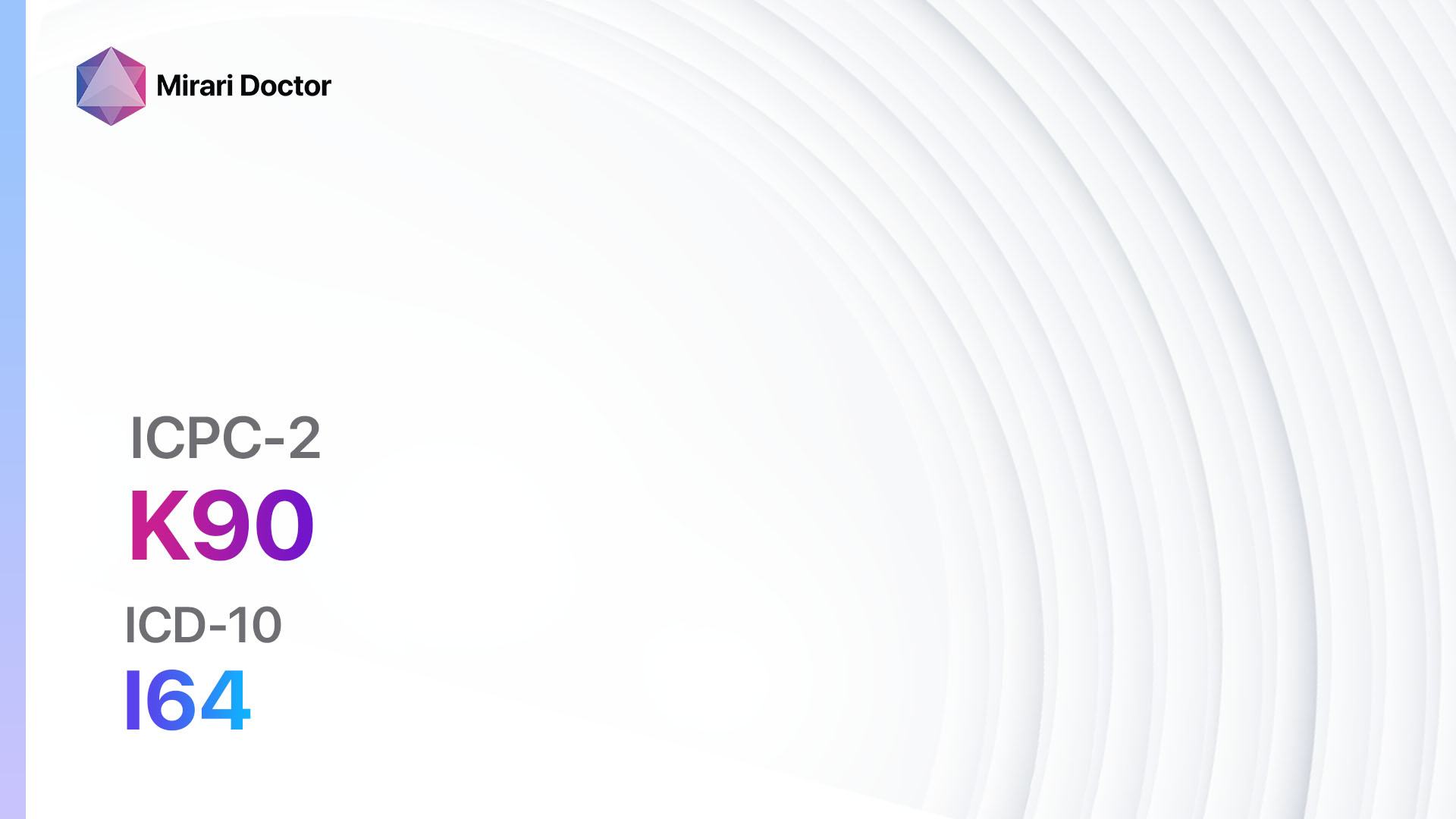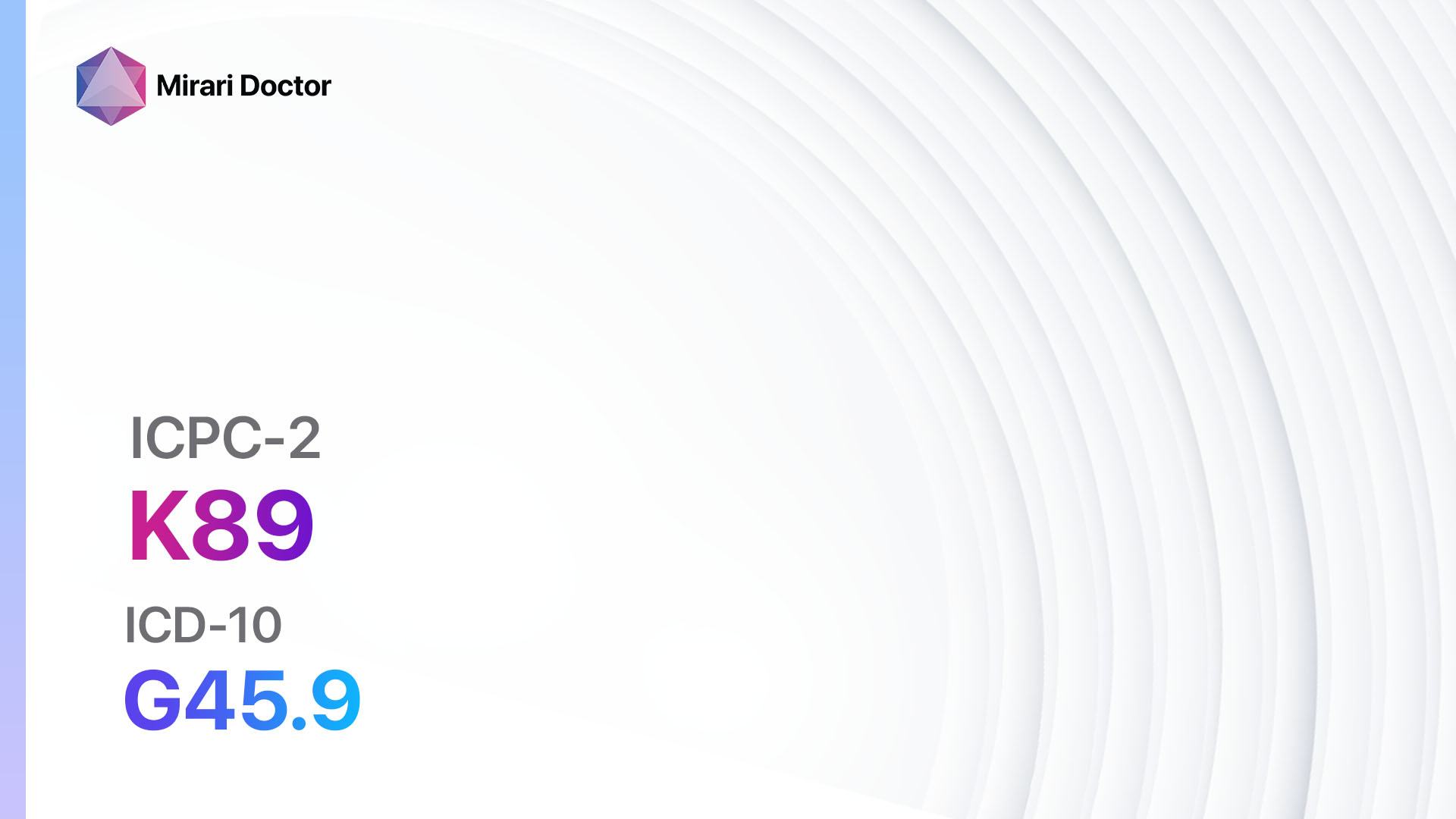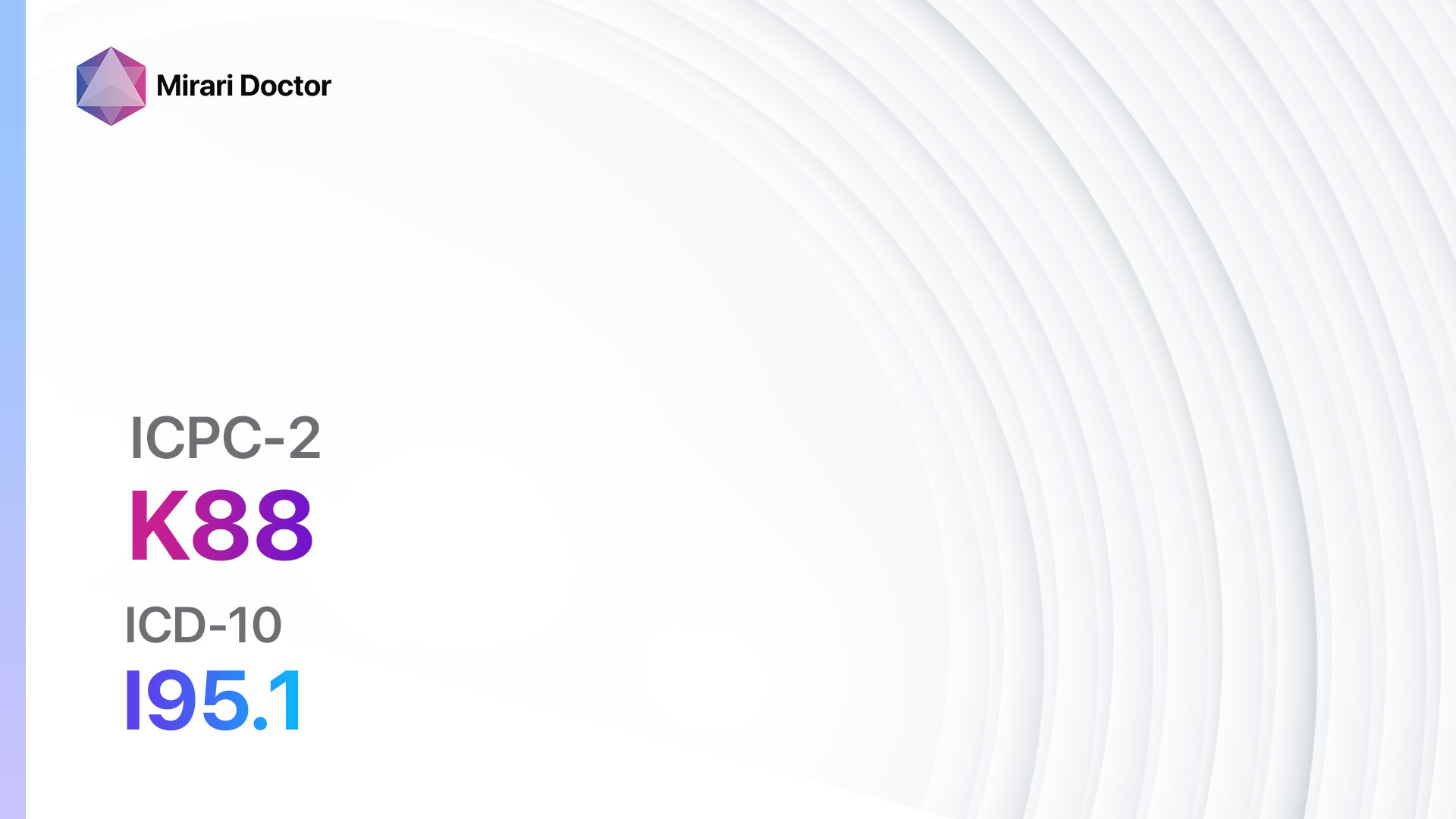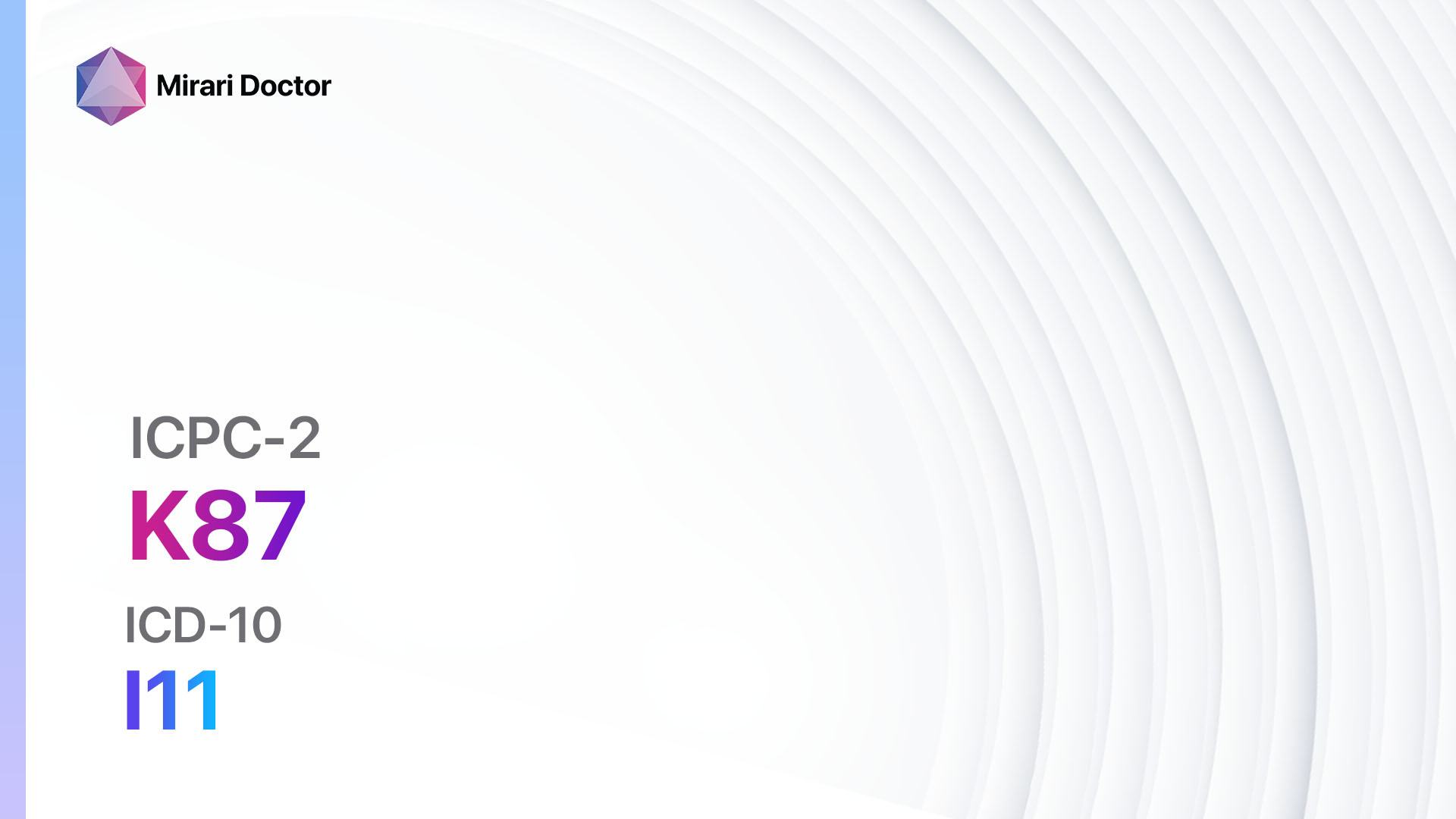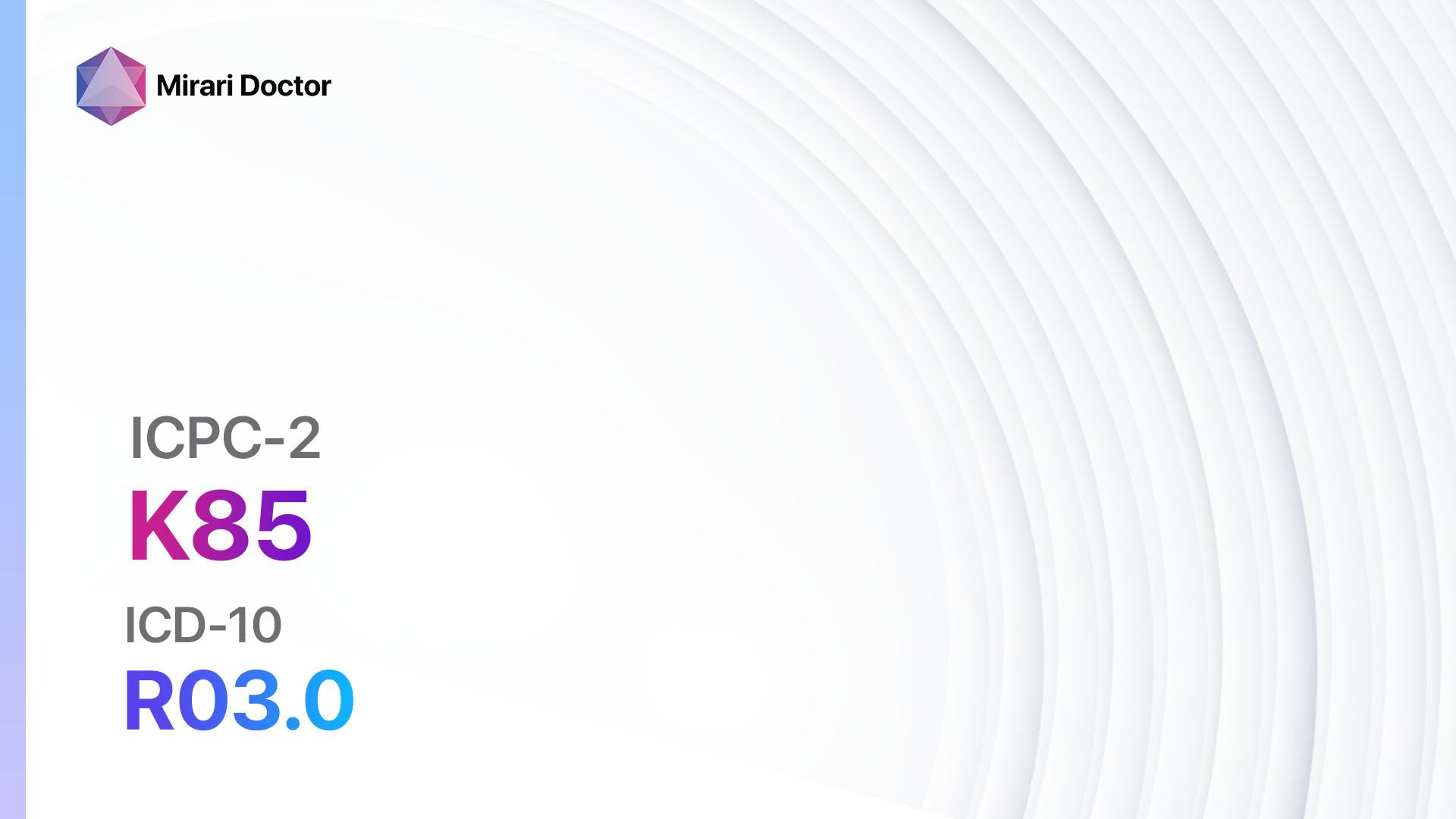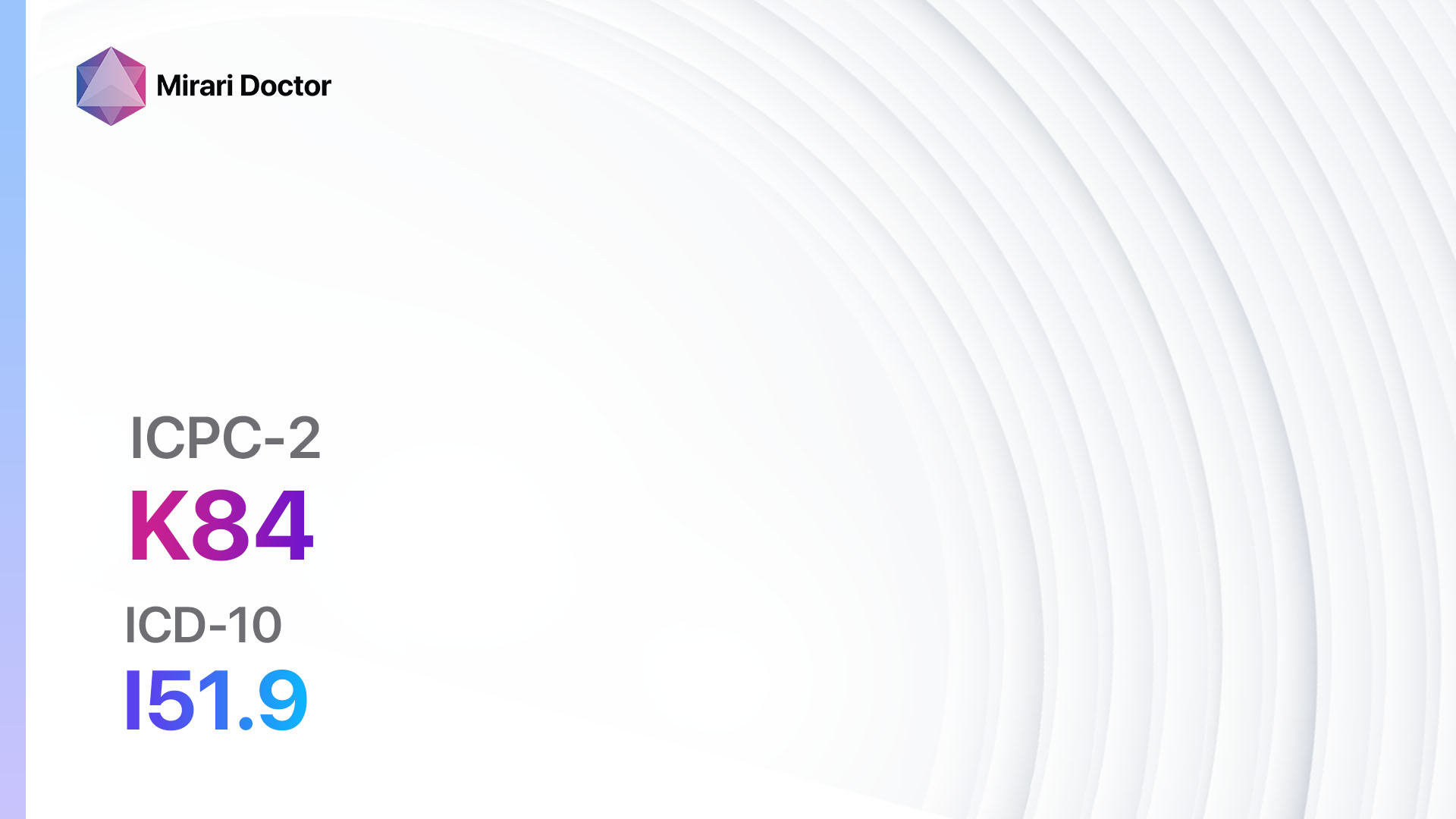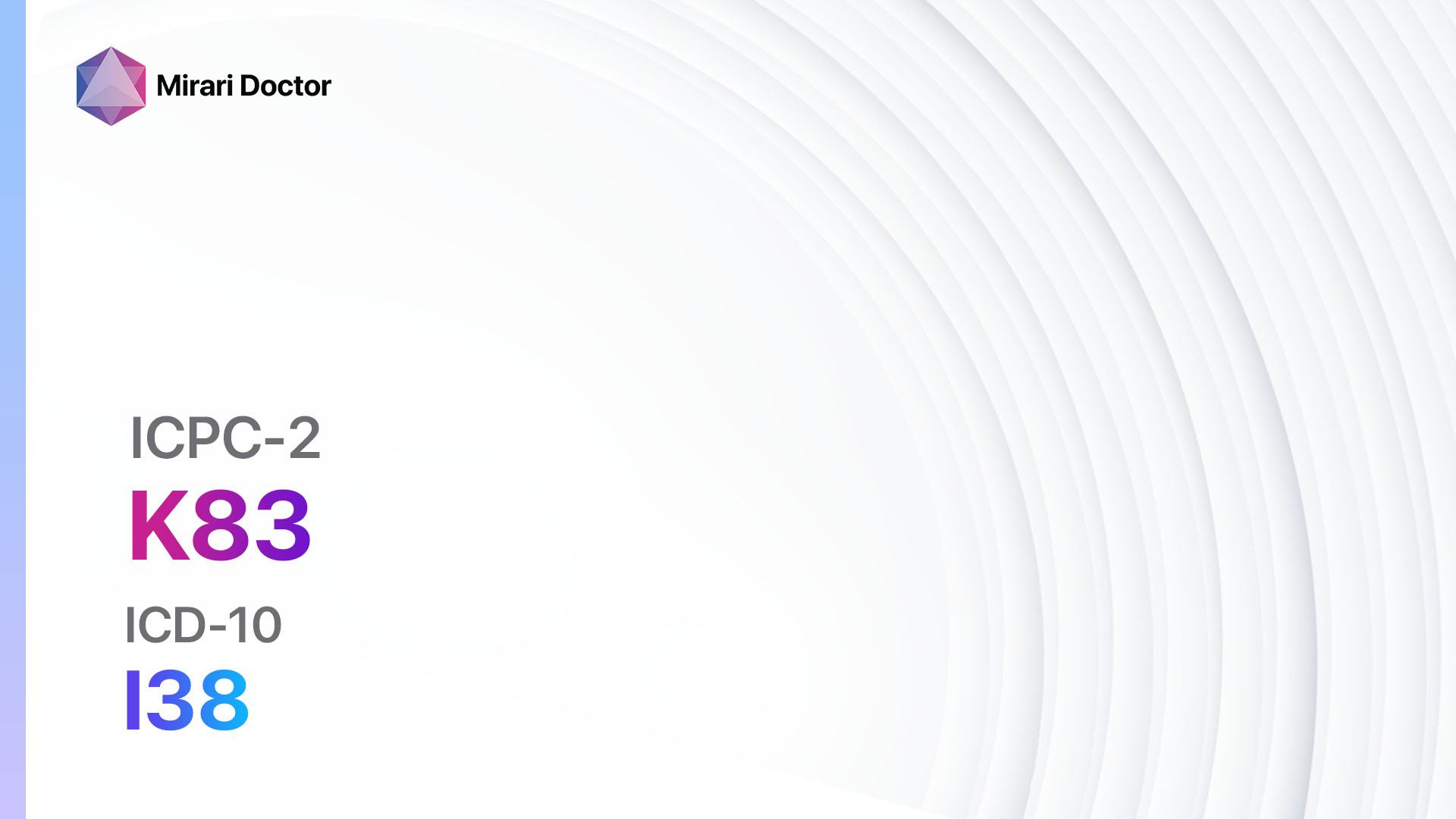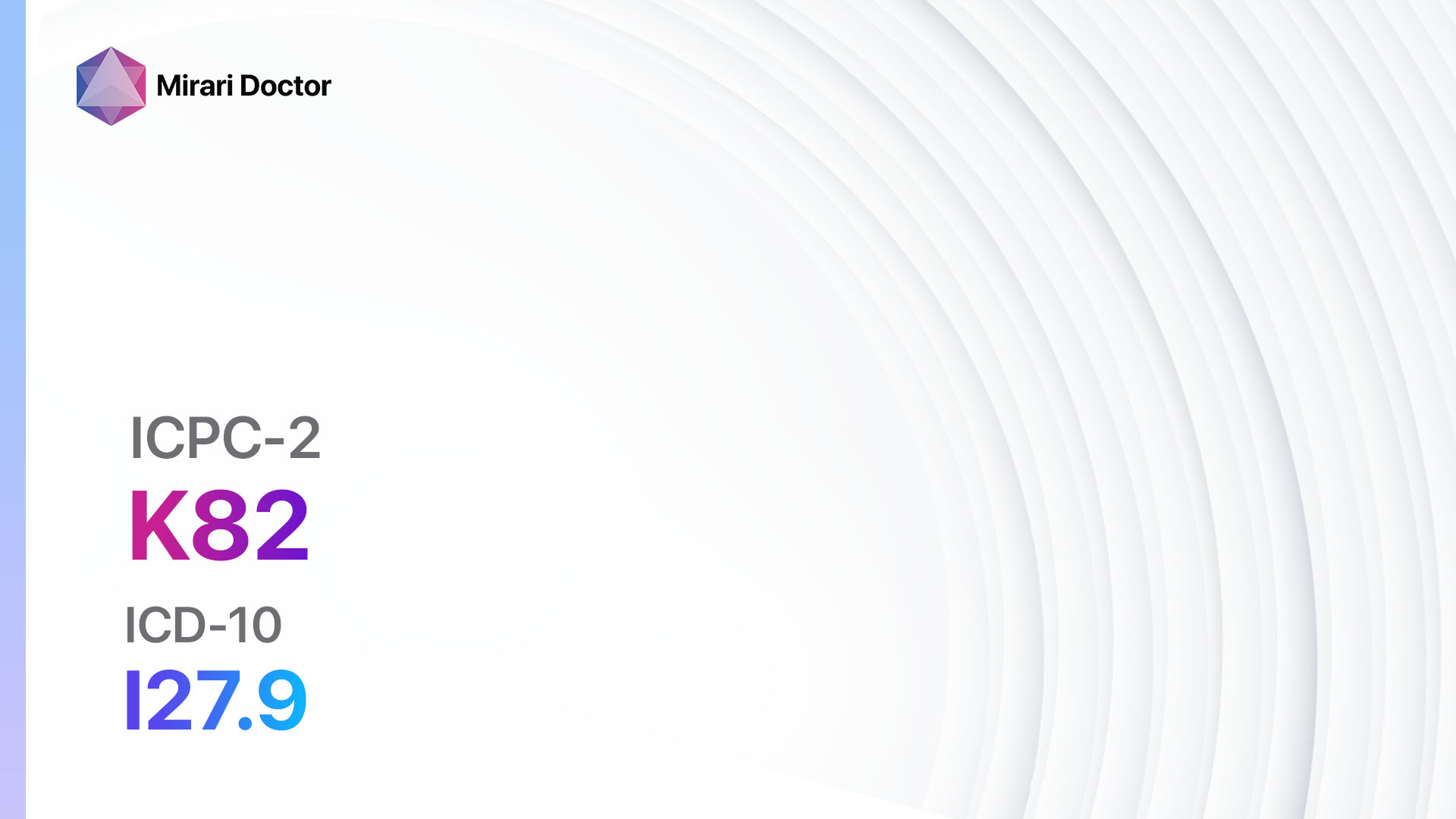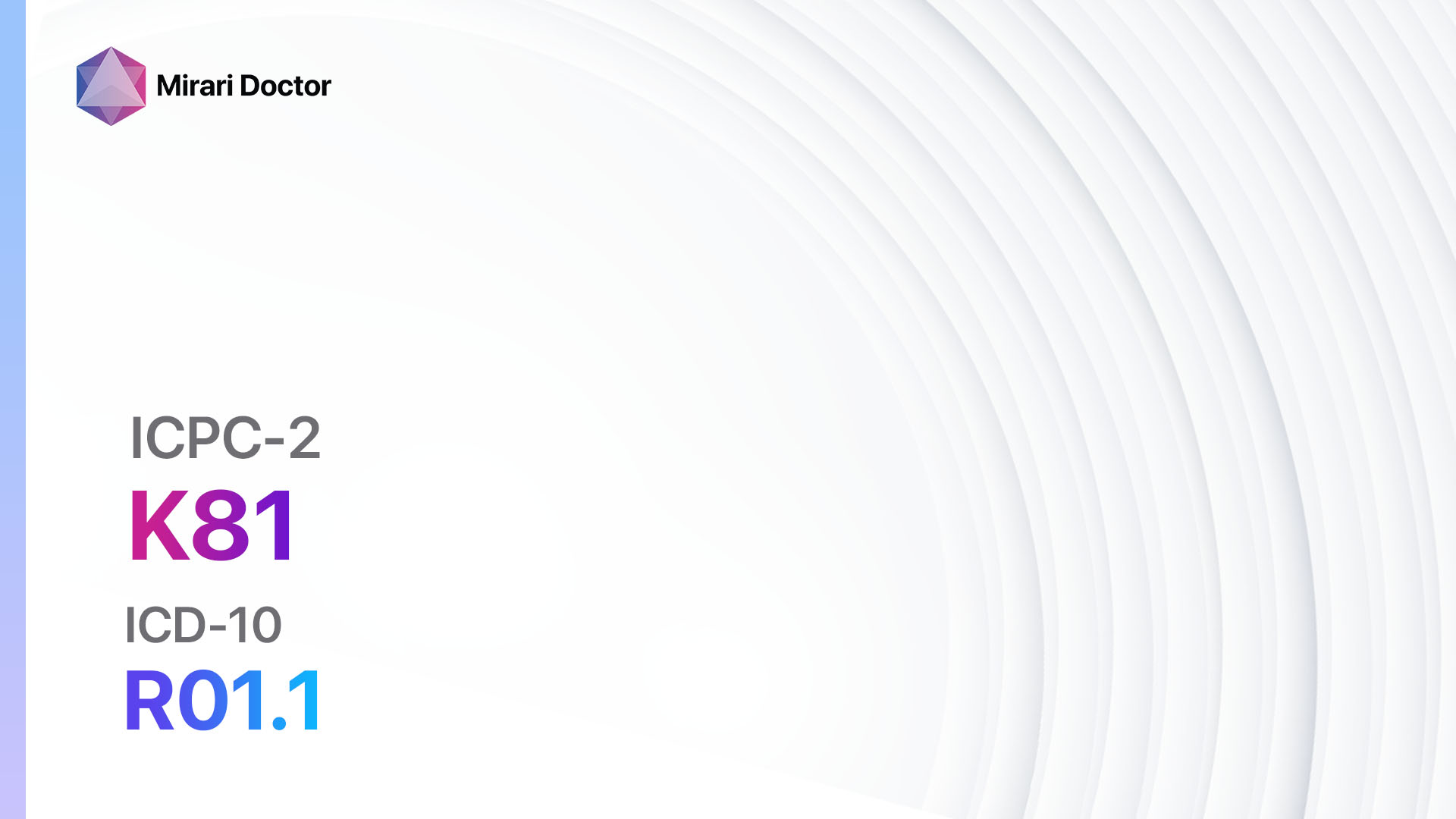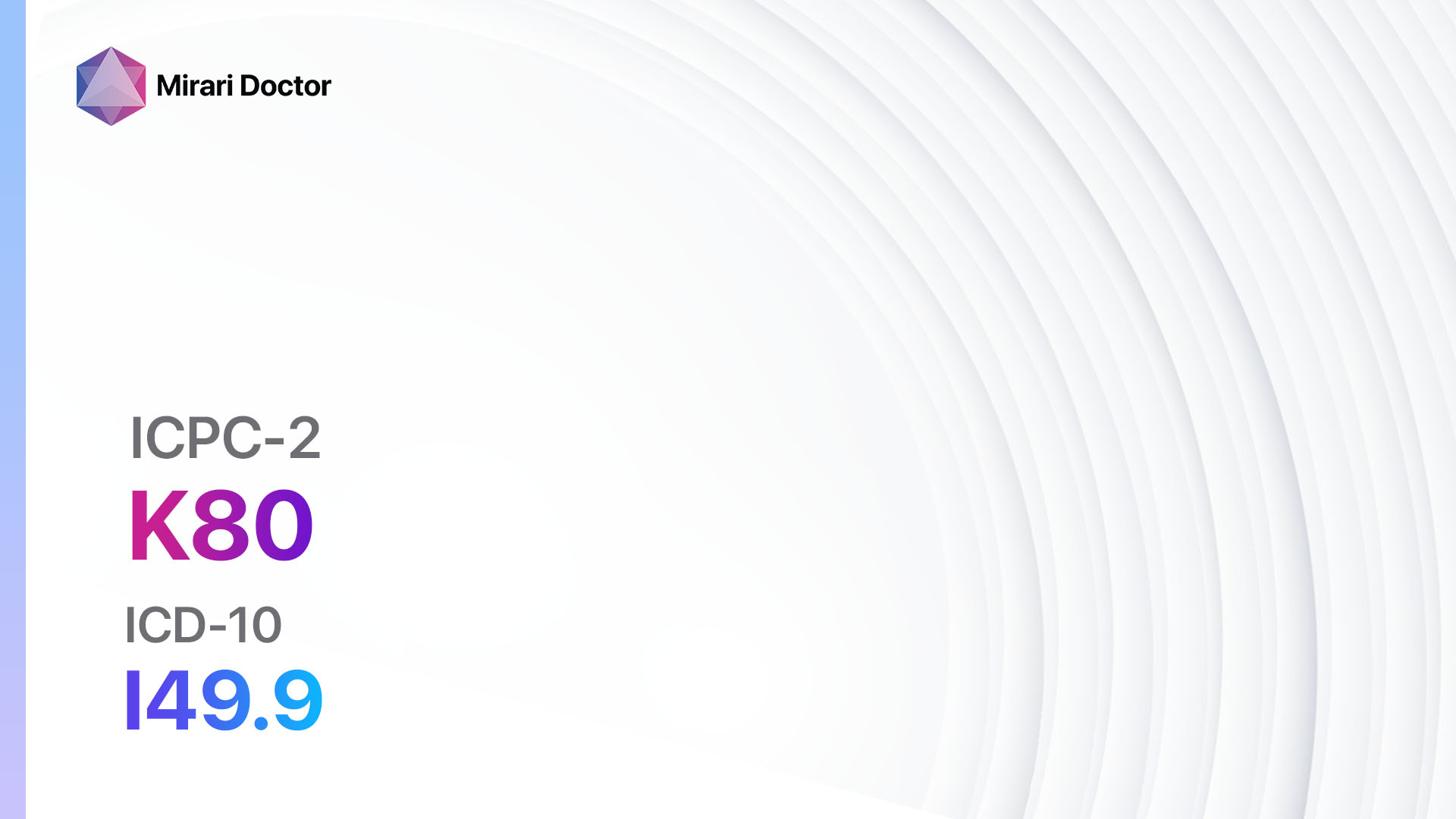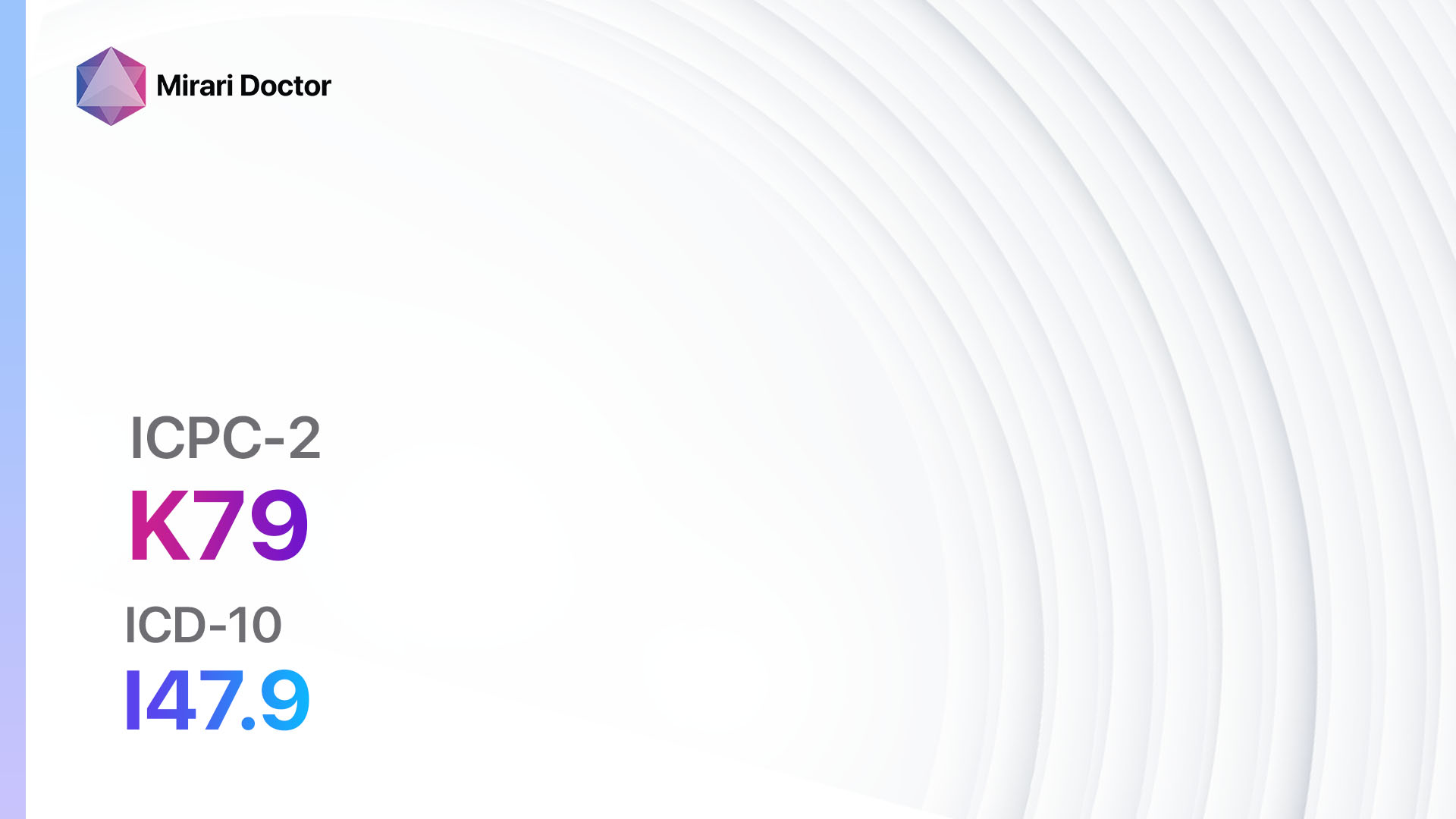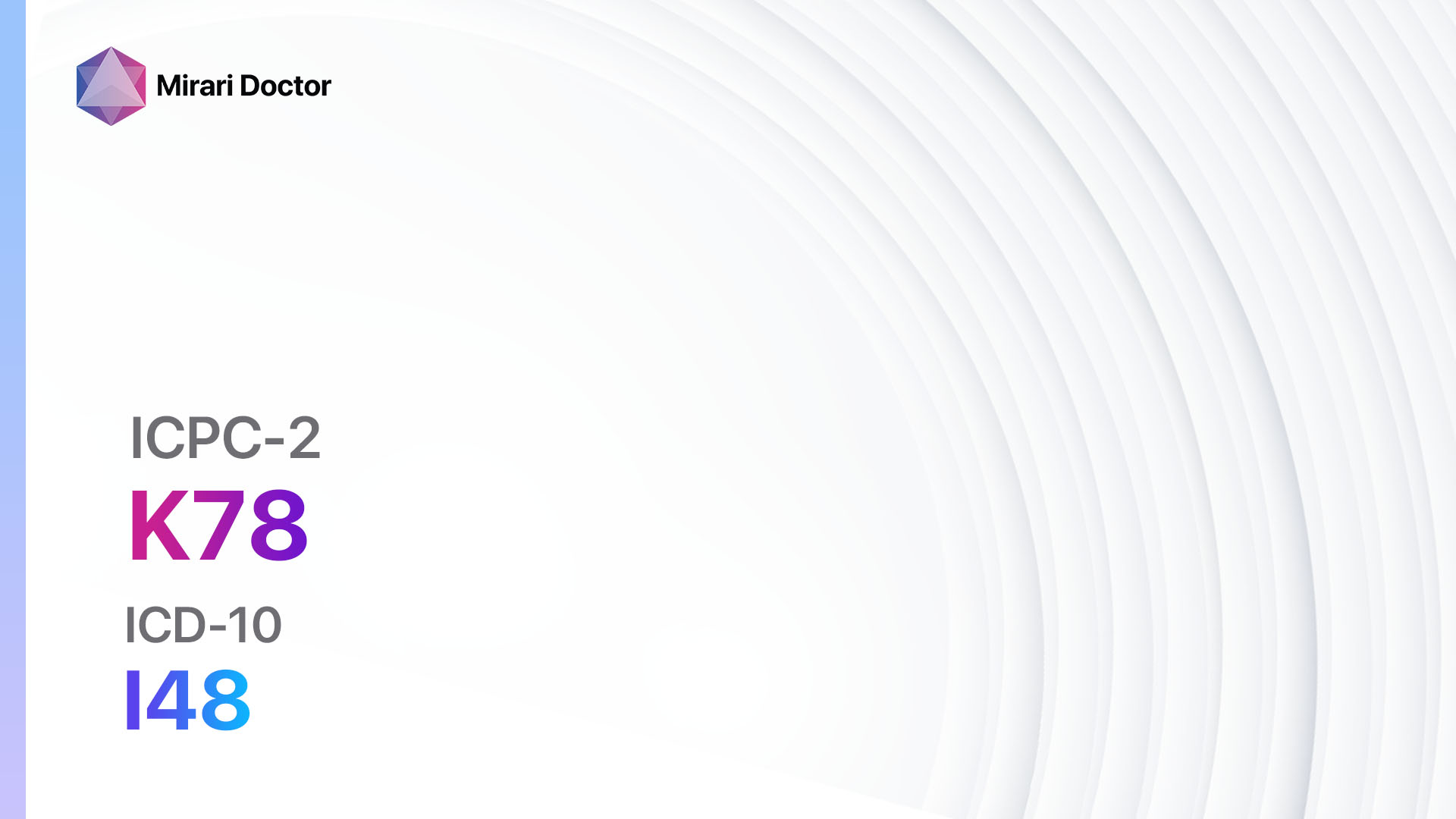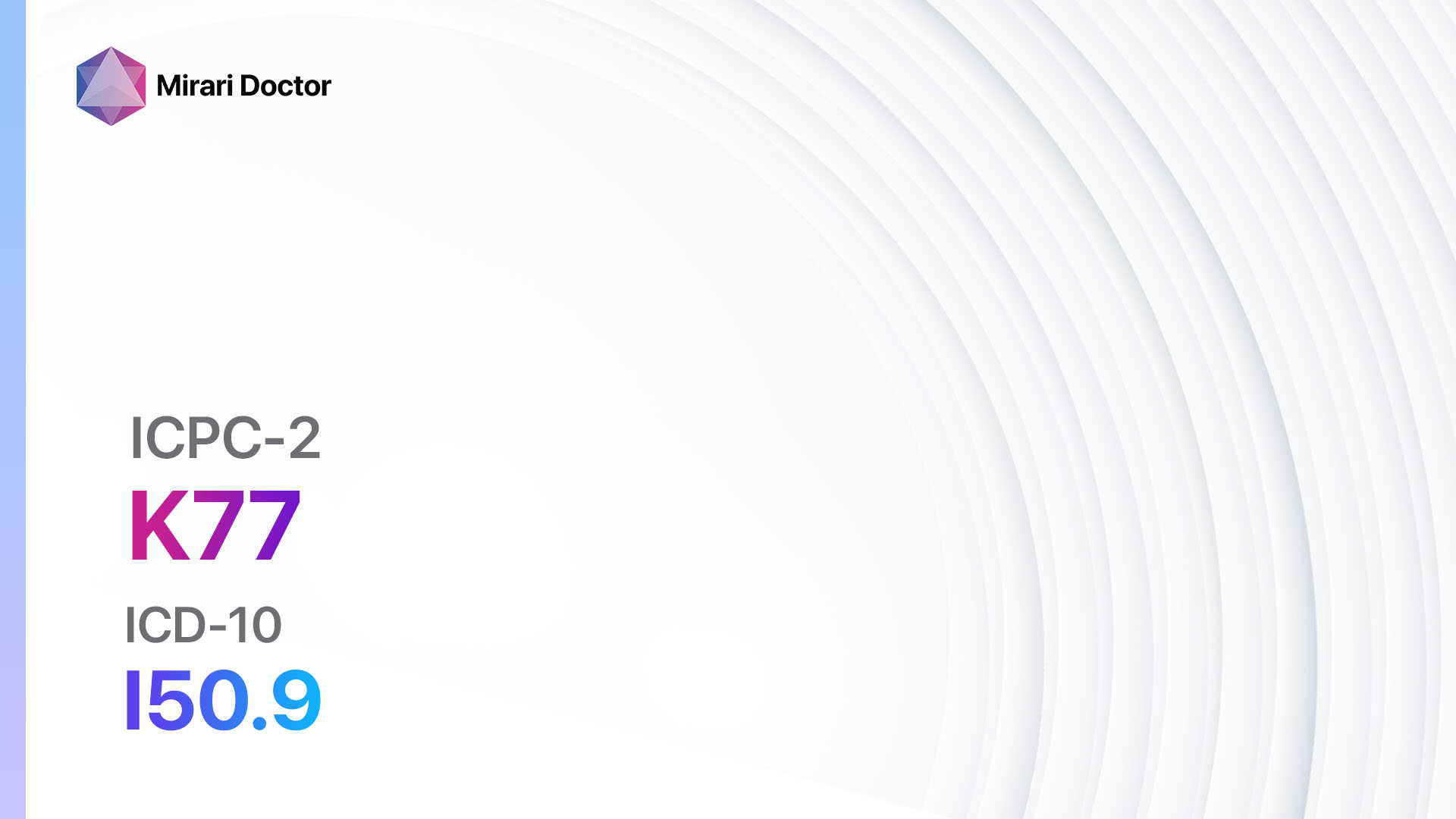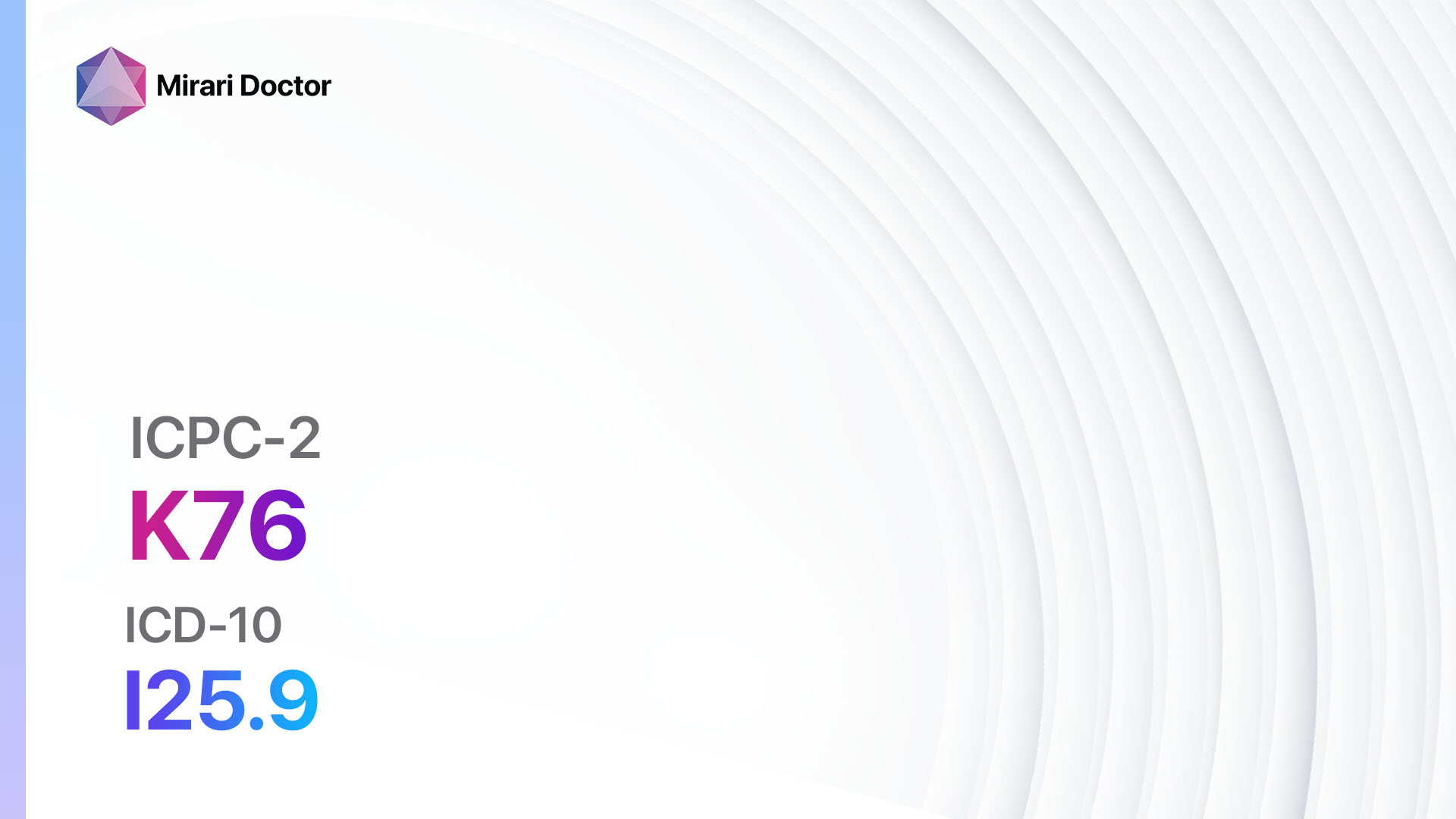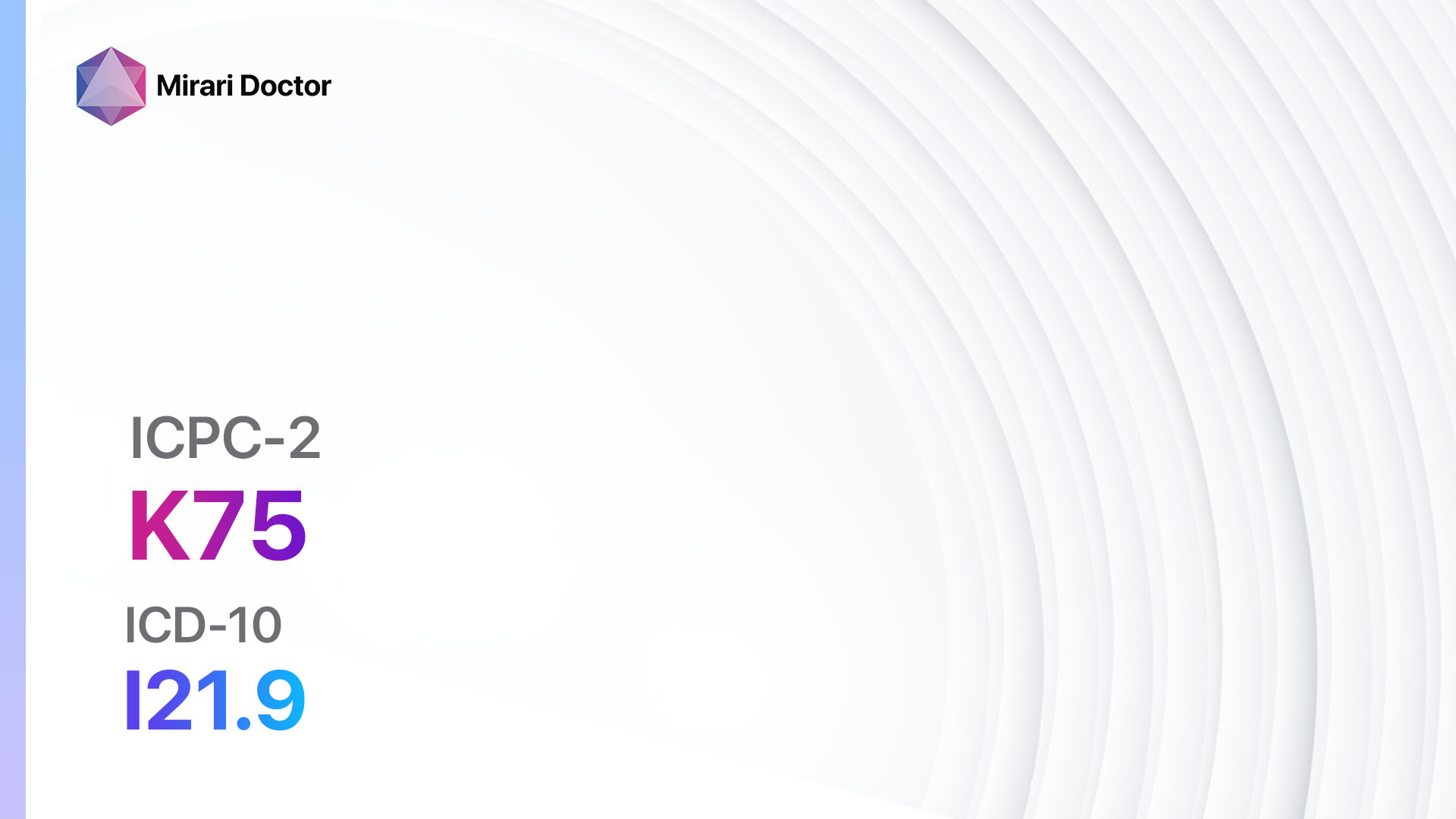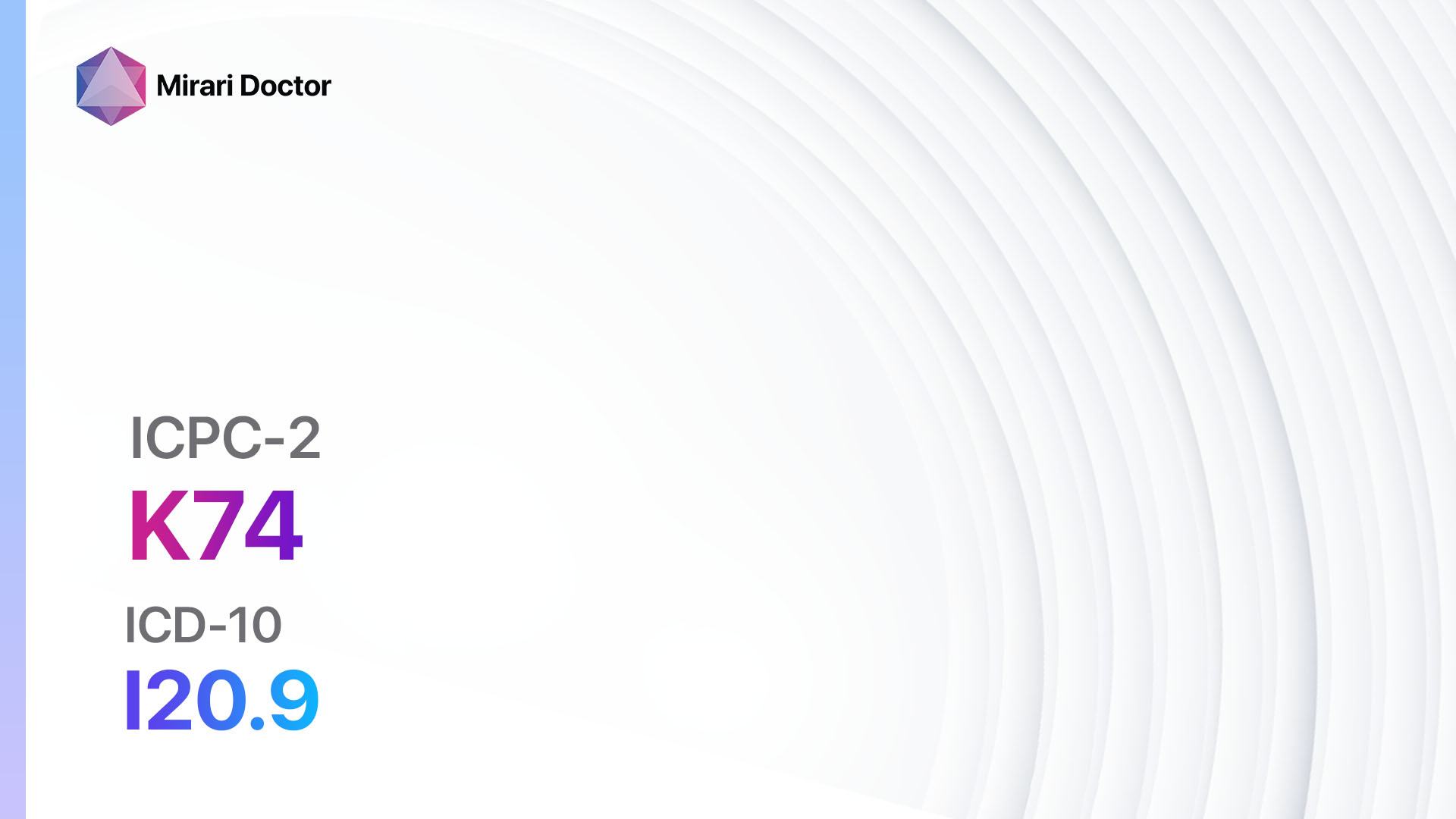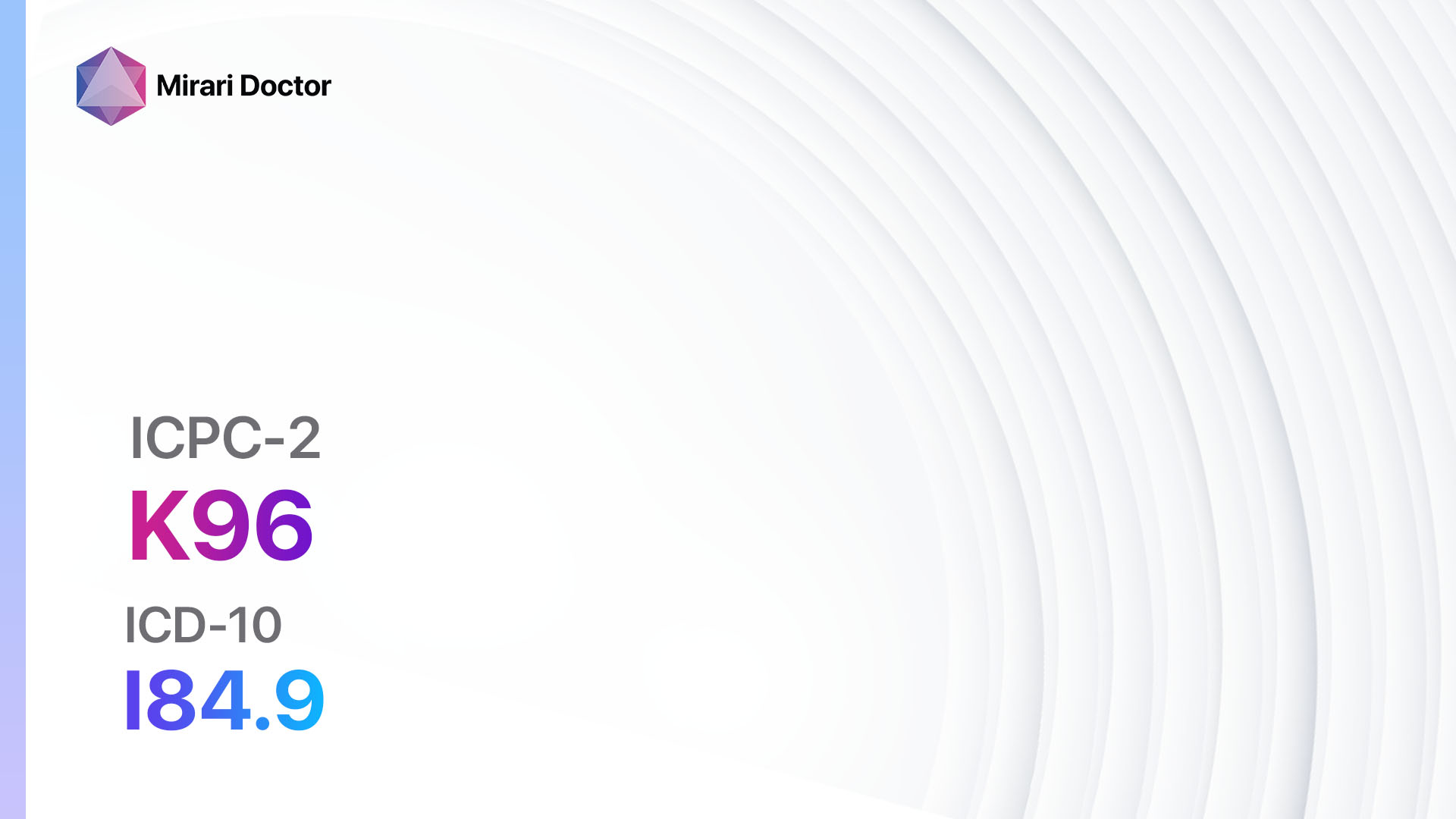
Introduction
Haemorrhoids, also known as piles, are swollen blood vessels in the rectum or anus that can cause discomfort and pain[1]. They are a common condition that affects both men and women[2]. The aim of this guide is to provide an overview of the symptoms, causes, diagnostic steps, possible interventions, and lifestyle interventions for haemorrhoids.
Codes
- ICPC-2 Code: K96 Haemorrhoids[3]
- ICD-10 Code: I84.9 Unspecified haemorrhoids without complication[4]
Symptoms
- Bleeding during bowel movements[5]
- Itching or irritation in the anal region[6]
- Pain or discomfort during bowel movements[7]
- Swelling or lumps around the anus[8]
- Leakage of feces[9]
Causes
- Straining during bowel movements[1]
- Chronic constipation or diarrhea[2]
- Sitting for long periods of time[5]
- Obesity or being overweight[6]
- Pregnancy and childbirth[7]
- Aging[8]
- Genetics[9]
Diagnostic Steps
Medical History
- Gather information about the patient’s symptoms, including the frequency and severity of bleeding, pain, and itching[1].
- Ask about any previous episodes of haemorrhoids or other related conditions[2].
- Inquire about the patient’s bowel habits, including any changes in frequency or consistency[3].
- Assess the patient’s medical history, including any underlying conditions that may contribute to haemorrhoids, such as chronic constipation or inflammatory bowel disease[4].
- Identify any risk factors for haemorrhoids, such as obesity or pregnancy[5].
Physical Examination
- Inspect the anal region for external haemorrhoids, which appear as swollen lumps around the anus[6].
- Perform a digital rectal examination to assess for internal haemorrhoids, which are located inside the rectum[7].
- Check for any signs of bleeding or inflammation[8].
- Evaluate the tone and strength of the anal sphincter muscles[9].
Laboratory Tests
- Stool occult blood test: This test can detect the presence of blood in the stool, which may indicate bleeding from haemorrhoids[1].
- Complete blood count (CBC): An elevated white blood cell count may suggest an infection or inflammation[2].
- Liver function tests: These tests may be ordered if there is concern about liver disease as a potential cause of haemorrhoids[3]
Diagnostic Imaging
- Anoscopy: This procedure involves inserting a small, flexible tube with a light source into the anus to visualize the rectum and lower part of the colon[4].
- Sigmoidoscopy: A longer, flexible tube with a camera is used to examine the rectum and sigmoid colon[5].
- Colonoscopy: This procedure allows for a comprehensive examination of the entire colon and rectum[6].
Other Tests
- Proctoscopy: A rigid or flexible tube is used to examine the rectum and lower part of the colon[7].
- Transanal ultrasound: This imaging technique uses sound waves to create images of the rectum and surrounding structures[8].
- Biopsy: If there are concerns about other conditions, such as colorectal cancer, a tissue sample may be taken for further analysis[9].
Follow-up and Patient Education
- Schedule a follow-up appointment to discuss the results of the diagnostic tests and determine the appropriate course of treatment[1].
- Provide education on lifestyle modifications and self-care measures to manage haemorrhoids[2].
- Discuss the importance of maintaining good bowel habits, including a high-fiber diet, regular exercise, and adequate hydration[10].
Possible Interventions
Traditional Interventions
Medications:
Top 5 drugs for Haemorrhoids:
- Topical corticosteroids (e.g., hydrocortisone cream):
- Cost: $5-$20 per tube.
- Contraindications: Hypersensitivity to corticosteroids.
- Side effects: Skin thinning, irritation.
- Severe side effects: None reported.
- Drug interactions: None reported.
- Warning: Prolonged use may lead to skin atrophy.
- Topical analgesics (e.g., lidocaine ointment):
- Cost: $10-$30 per tube.
- Contraindications: Hypersensitivity to local anesthetics.
- Side effects: Skin irritation, allergic reactions.
- Severe side effects: None reported.
- Drug interactions: None reported.
- Warning: Do not apply to open wounds or broken skin.
- Oral pain relievers (e.g., acetaminophen, ibuprofen):
- Cost: $5-$15 per bottle or box.
- Contraindications: Allergy to the medication, history of gastrointestinal bleeding.
- Side effects: Upset stomach, liver damage (with acetaminophen).
- Severe side effects: None reported with short-term use.
- Drug interactions: Other pain relievers, blood thinners.
- Warning: Follow recommended dosages and avoid long-term use.
- Fiber supplements (e.g., psyllium):
- Cost: $10-$20 per bottle.
- Contraindications: Allergy to psyllium.
- Side effects: Bloating, gas.
- Severe side effects: None reported.
- Drug interactions: None reported.
- Warning: Take with plenty of water to prevent choking.
- Stool softeners (e.g., docusate sodium):
- Cost: $5-$15 per bottle.
- Contraindications: Allergy to docusate sodium.
- Side effects: Diarrhea, stomach cramps.
- Severe side effects: None reported.
- Drug interactions: None reported.
- Warning: Do not use for more than 1 week without medical supervision.
Alternative Drugs:
- Vasoconstrictors (e.g., phenylephrine): These medications can help reduce swelling and shrink haemorrhoids.
- Astringents (e.g., witch hazel): These substances can help relieve itching and irritation.
- Oral venotonic agents (e.g., diosmin): These medications improve venous tone and reduce inflammation.
Surgical Procedures:
- Rubber band ligation: A small rubber band is placed around the base of the haemorrhoid to cut off its blood supply, causing it to shrink and fall off. Cost: $500-$1,500.
- Sclerotherapy: A chemical solution is injected into the haemorrhoid, causing it to shrink. Cost: $500-$1,500.
- Hemorrhoidectomy: Surgical removal of the haemorrhoids. Cost: $2,000-$5,000.
Alternative Interventions
- Sitz baths: Soaking the anal area in warm water for 10-15 minutes several times a day can help relieve symptoms. Cost: $10-$20 for a sitz bath kit.
- Herbal remedies: Witch hazel, aloe vera, and chamomile can be applied topically to reduce inflammation and soothe the anal area. Cost: Varies depending on the specific product.
- Essential oils: Some essential oils, such as tea tree oil and lavender oil, have anti-inflammatory properties and can be diluted and applied topically. Cost: Varies depending on the specific oil.
- Cold compress: Applying a cold compress to the anal area can help reduce swelling and provide temporary relief. Cost: $5-$10 for a cold pack.
- Dietary changes: Increasing fiber intake and drinking plenty of water can help soften the stool and prevent constipation. Cost: Varies depending on the specific dietary changes.
Lifestyle Interventions
- Regular exercise: Engaging in physical activity can help improve bowel function and prevent constipation. Cost: Varies depending on the chosen activity.
- Adequate hydration: Drinking enough water can help soften the stool and prevent straining during bowel movements. Cost: Varies depending on water source.
- Avoiding straining: Encourage patients to avoid straining during bowel movements and to take their time on the toilet. Cost: None.
- Good hygiene: Proper anal hygiene, including gentle wiping and keeping the area clean, can help prevent irritation and infection. Cost: Varies depending on personal hygiene products.
- Weight management: Maintaining a healthy weight can reduce the risk of developing haemorrhoids. Cost: Varies depending on chosen weight management methods.
It is important to note that the cost ranges provided are approximate and may vary depending on the location and availability of the interventions.
Mirari Cold Plasma Alternative Intervention
Understanding Mirari Cold Plasma
- Safe and Non-Invasive Treatment: Mirari Cold Plasma is a safe and non-invasive treatment option for various skin conditions. It does not require incisions, minimizing the risk of scarring, bleeding, or tissue damage.
- Efficient Extraction of Foreign Bodies: Mirari Cold Plasma facilitates the removal of foreign bodies from the skin by degrading and dissociating organic matter, allowing easier access and extraction.
- Pain Reduction and Comfort: Mirari Cold Plasma has a local analgesic effect, providing pain relief during the treatment, making it more comfortable for the patient.
- Reduced Risk of Infection: Mirari Cold Plasma has antimicrobial properties, effectively killing bacteria and reducing the risk of infection.
- Accelerated Healing and Minimal Scarring: Mirari Cold Plasma stimulates wound healing and tissue regeneration, reducing healing time and minimizing the formation of scars.
Mirari Cold Plasma Prescription
Video instructions for using Mirari Cold Plasma Device – K96 Haemorrhoids (ICD-10:I84.9)
| Mild | Moderate | Severe |
| Mode setting: 1 (Infection) Location: 5 (Lungs) Morning: 15 minutes, Evening: 15 minutes |
Mode setting: 1 (Infection) Location: 5 (Lungs) Morning: 30 minutes, Lunch: 30 minutes, Evening: 30 minutes |
Mode setting: 1 (Infection) Location: 5 (Lungs) Morning: 30 minutes, Lunch: 30 minutes, Evening: 30 minutes |
| Mode setting: 2 (Wound Healing) Location: 5 (Lungs) Morning: 15 minutes, Evening: 15 minutes |
Mode setting: 2 (Wound Healing) Location: 5 (Lungs) Morning: 30 minutes, Lunch: 30 minutes, Evening: 30 minutes |
Mode setting: 2 (Wound Healing) Location: 5 (Lungs) Morning: 30 minutes, Lunch: 30 minutes, Evening: 30 minutes |
| Mode setting: 7 (Immunotherapy) Location: 1 (Sacrum) Morning: 15 minutes, Evening: 15 minutes |
Mode setting: 7 (Immunotherapy) Location: 1 (Sacrum) Morning: 30 minutes, Lunch: 30 minutes, Evening: 30 minutes |
Mode setting: 7 (Immunotherapy) Location: 1 (Sacrum) Morning: 30 minutes, Lunch: 30 minutes, Evening: 30 minutes |
| Mode setting: 7 (Immunotherapy) Location: 4 (Heart, Bile & Pancreas) Morning: 15 minutes, Evening: 15 minutes |
Mode setting: 7 (Immunotherapy) Location: 4 (Heart, Bile & Pancreas) Morning: 30 minutes, Lunch: 30 minutes, Evening: 30 minutes |
Mode setting: 7 (Immunotherapy) Location: 4 (Heart, Bile & Pancreas) Morning: 30 minutes, Lunch: 30 minutes, Evening: 30 minutes |
| Total Morning: 60 minutes approx. $10 USD, Evening: 60 minutes approx. $10 USD |
Total Morning: 120 minutes approx. $20 USD, Lunch: 120 minutes approx. $20 USD, Evening: 120 minutes approx. $20 USD, |
Total Morning: 120 minutes approx. $20 USD, Lunch: 120 minutes approx. $20 USD, Evening: 120 minutes approx. $20 USD, |
| Usual treatment for 7-60 days approx. $140 USD – $1200 USD | Usual treatment for 6-8 weeks approx. $2,520 USD – $3,360 USD |
Usual treatment for 3-6 months approx. $5,400 USD – $10,800 USD
|
 |
|
Use the Mirari Cold Plasma device to treat Haemorrhoids effectively.
WARNING: MIRARI COLD PLASMA IS DESIGNED FOR THE HUMAN BODY WITHOUT ANY ARTIFICIAL OR THIRD PARTY PRODUCTS. USE OF OTHER PRODUCTS IN COMBINATION WITH MIRARI COLD PLASMA MAY CAUSE UNPREDICTABLE EFFECTS, HARM OR INJURY. PLEASE CONSULT A MEDICAL PROFESSIONAL BEFORE COMBINING ANY OTHER PRODUCTS WITH USE OF MIRARI.
Step 1: Cleanse the Skin
- Start by cleaning the affected area of the skin with a gentle cleanser or mild soap and water. Gently pat the area dry with a clean towel.
Step 2: Prepare the Mirari Cold Plasma device
- Ensure that the Mirari Cold Plasma device is fully charged or has fresh batteries as per the manufacturer’s instructions. Make sure the device is clean and in good working condition.
- Switch on the Mirari device using the power button or by following the specific instructions provided with the device.
- Some Mirari devices may have adjustable settings for intensity or treatment duration. Follow the manufacturer’s instructions to select the appropriate settings based on your needs and the recommended guidelines.
Step 3: Apply the Device
- Place the Mirari device in direct contact with the affected area of the skin. Gently glide or hold the device over the skin surface, ensuring even coverage of the area experiencing.
- Slowly move the Mirari device in a circular motion or follow a specific pattern as indicated in the user manual. This helps ensure thorough treatment coverage.
Step 4: Monitor and Assess:
- Keep track of your progress and evaluate the effectiveness of the Mirari device in managing your Haemorrhoids. If you have any concerns or notice any adverse reactions, consult with your health care professional.
Note
This guide is for informational purposes only and should not replace the advice of a medical professional. Always consult with your healthcare provider or a qualified medical professional for personal advice, diagnosis, or treatment. Do not solely rely on the information presented here for decisions about your health. Use of this information is at your own risk. The authors of this guide, nor any associated entities or platforms, are not responsible for any potential adverse effects or outcomes based on the content.
Mirari Cold Plasma System Disclaimer
- Purpose: The Mirari Cold Plasma System is a Class 2 medical device designed for use by trained healthcare professionals. It is registered for use in Thailand and Vietnam. It is not intended for use outside of these locations.
- Informational Use: The content and information provided with the device are for educational and informational purposes only. They are not a substitute for professional medical advice or care.
- Variable Outcomes: While the device is approved for specific uses, individual outcomes can differ. We do not assert or guarantee specific medical outcomes.
- Consultation: Prior to utilizing the device or making decisions based on its content, it is essential to consult with a Certified Mirari Tele-Therapist and your medical healthcare provider regarding specific protocols.
- Liability: By using this device, users are acknowledging and accepting all potential risks. Neither the manufacturer nor the distributor will be held accountable for any adverse reactions, injuries, or damages stemming from its use.
- Geographical Availability: This device has received approval for designated purposes by the Thai and Vietnam FDA. As of now, outside of Thailand and Vietnam, the Mirari Cold Plasma System is not available for purchase or use.
References
- Lohsiriwat, V. (2012). Hemorrhoids: from basic pathophysiology to clinical management. World journal of gastroenterology: WJG, 18(17), 2009.
- Riss, S., Weiser, F. A., Schwameis, K., Riss, T., Mittlböck, M., Steiner, G., & Stift, A. (2012). The prevalence of hemorrhoids in adults. International journal of colorectal disease, 27(2), 215-220.
- WONCA International Classification Committee. (1998). ICPC-2: International classification of primary care. Oxford University Press, USA.
- World Health Organization. (2019). International statistical classification of diseases and related health problems (11th ed.).
- Peery, A. F., Sandler, R. S., Galanko, J. A., Bresalier, R. S., Figueiredo, J. C., Ahnen, D. J., … & Baron, J. A. (2015). Risk factors for hemorrhoids on screening colonoscopy. PloS one, 10(9), e0139100.
- Lohsiriwat, V. (2015). Treatment of hemorrhoids: A coloproctologist’s view. World journal of gastroenterology: WJG, 21(31), 9245.
- Abramowitz, L., Sobhani, I., Benifla, J. L., Vuagnat, A., Daraï, E., Mignon, M., & Madelenat, P. (2002). Anal fissure and thrombosed external hemorrhoids before and after delivery. Diseases of the colon & rectum, 45(5), 650-655.
- Johanson, J. F., & Sonnenberg, A. (1990). The prevalence of hemorrhoids and chronic constipation: an epidemiologic study. Gastroenterology, 98(2), 380-386.
- Alonso-Coello, P., Mills, E., Heels-Ansdell, D., López-Yarto, M., Zhou, Q., Johanson, J. F., & Guyatt, G. (2006). Fiber for the treatment of hemorrhoids complications: a systematic review and meta-analysis. The American journal of gastroenterology, 101(1), 181-188.
- Baker, Ralph S. ; LaChance, John ; Heron, Gorm (2006). In-pile thermal desorption of PAHs, PCBs and dioxins/furans in soil and sediment. DOI: 10.2462/09670513.731
Related articles
Made in USA


